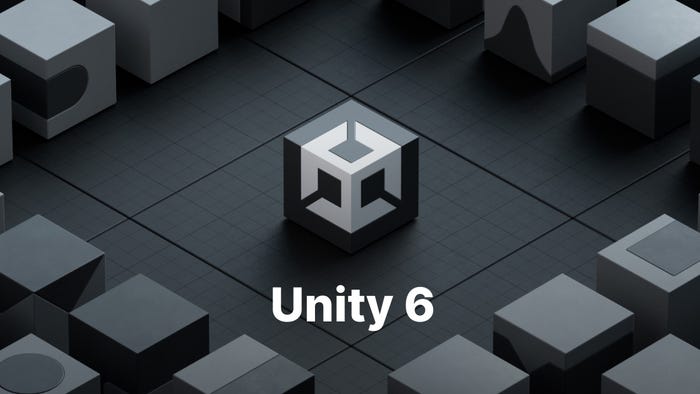Luck of the Draw: Loot Box Monetization
What makes a successful loot box monetization system, and how to implement it properly in your game.


2016 was dubbed "Year of the Loot Box" by the GamesBeat crew - and rightfully so. When we talk about loot boxes, we're talking about in-game crates that randomly drop items of varying value to the player. Items are often cosmetic, but they could also be gear, power-ups, or even in-game currency.
Free-to-play games have been using the loot box system for a while now, but recently, the trend has exploded into the premium game scene. Massive premium titles such as Battlefield 1 and Overwatch have made a killing off of their loot box systems. So developers have found a way to swindle even more dollars out of their defenseless audience?! No, not exactly. In fact, one of the most interesting and refreshing aspects of the loot box system is that players actually want to spend, rather than being forced to spend. Traditional DLC models tend to leave the player feeling as if they are missing out on the full game experience if they don't purchase the latest map packs or upgrades. It's the carrot (loot box) versus the stick (traditional DLC).
It's unfortunate that many players look at DLC as a cash grab. However, some developers do take a less than righteous approach to in-game monetization. The loot box system isn't necessarily a silver bullet that can solve all of your monetization woes, but it does have some excellent benefits for the studio and for the players.
Benefits to the Player
Players love new content, and they can devour it quite rapidly. Loot boxes can help provide micro-content to satiate the players' appetite for content while larger DLC is being developed. Additionally, the loot box system can be used as a means of revenue to fund the development of larger DLC, potentially allowing the larger DLC to be free for players. It's a controversial topic that we will likely cover in a different post, but it can often be beneficial to avoid segmenting your playerbase with paid DLC in multiplayer games.
So, the player is benefited by having access to micro-content in between major updates, while potentially not having to pay for said major updates. Also, to go back to the carrot versus stick argument, players don't feel as if they are obligated to purchase DLC just to stay current. Instead, the players may simply want to purchase loot boxes because they enjoy the high of the lotto.

Battlefield 1 has different quality loot boxes or "Battlepacks"
Benefits to the Developer
Hungry, hungry players. As a developer, one of the biggest challenges isn't just building the game, it's the content support post-launch. Whether it's new characters, new game modes, or new maps, players often expect a continuous stream of new content. That's a heavy weight on the shoulders of the development studio. Funding those big content pushes can be a struggle, too. The idea of games as a service comes with the reality that additional revenue has to come in post-sale. Meaning, players need to continue to be monetized after the initial game purchase. Again, we have some gripes with traditional DLC, but it does bring in revenue. Loot boxes may be able to replace this revenue stream, or at least supplement in a way that makes the traditional DLC much less expensive to the player.
So, the developer is benefited by the micro-content that keeps the player's happy during DLC dry spells. Plus, the alternative or additional revenue comes at a very low cost to the studio. Skins, sprays, voice lines, emotes, animations, etc. are all relatively cheap and quick to produce.
Keys to a Succesful Loot Box System
Okay, so there's benefits to both parties when implementing a loot box system. However, it's not necessarily a turn key solution. There are a few key elements that we feel must be present in order to have a successful loot box system.
Scarcity of Items
In short, there needs to be epic loot that everyone is gunning for. Players will be much less motivated to open loot boxes if there isn't a chance of getting some rare item that not many players have, especially when it comes to cosmetic items. Consider using a loot drop table similar to those that are used in MMORPGs (common, uncommon, rare, epic, legendary, etc.). Then, tell the players what their odds are of receiving an item of each respective rarity level. Maybe you explicitly say that each box of this kind will contain exactly this many items of this rarity. Or, communicate to the player the relative odds of each rarity level.

Overwatch implies the chance of each rarity level, without explicity denoting an amount until openned.
Seasonal Events
Blizzard is infamous for their seasonal events across all of their mulitplayer games. Real-world holidays and in-game events tend to line up nicely. That being said, totally fictional in-game seasons can be just as successful. The point is, there are certain items that are only available during the special seasonal event. Once the season is over, the players won't have a chance to get those special items again (or at least not until the next year). This creates a sense of urgency and increased scarcity of the seasonal items.

Overwatch's Chinese New Year Loot Box
Perceived Player Influence
Much like gambling on a slot machine, players want to feel as if they have some sort of control over their fate. When opening a loot box, it may be beneficial to give the player a bit of input ability. Give them a "stop" button if you will, like with slots. The Walking Dead: No Man's Land does this pretty well by presenting the player with 9 unopened loot boxes. Any three of these boxes can be opened for free, 3 more by watching a video, and the final 3 only by paying in-game currency. While the player obviously doesn't know what is inside of each box, they feel as if they are in control, instead of being at the will of the luck goddess. Perceived is the operative word in perceived player influence - they don't have to have total control (or any at all) but they can't feel helpless. Ironically, Blizzard ignores this key in Overwatch.

The Walking Dead: No Man's Land explicitly denotes the amount of each rarity available.
Use Loot Boxes as a Reward
While loot boxes need to be available for purchase, they should also be given to the player for free based on in-game achievements or time played. The player needs to be familiarized with the mechanic before they will feel comfortable putting their money on the table. The "near miss" factor can apply here, too. In the free loot box, a player may see an epic drop that they are hoping will be the skin or doodad that they really want. Then, when the item drops, it ends up being something other than that specific coveted item. This near miss makes the player want that doodad even more. Thus, enforcing the drive to open more loot boxes. The player is now getting thrill and enjoyment out of opening loot boxes, and now they are much more likely to spend actual cash for said loot boxes.
Thanks for reading! We're always up for discussion, so feel free to drop a comment below. New blogs are posted every Tuesday (well, most Tuesdays) so be sure to stop by again next week.
Read more about:
BlogsAbout the Author(s)
You May Also Like









